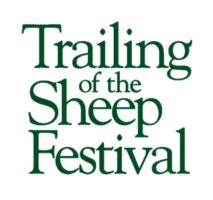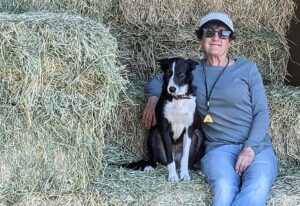How it Works: Elements For Scoring Open Trials
In an Open Trial, the dog is scored on eight elements:
- Outrun, Lift and Fetch (3) – 50 points
- Drives (Drive Away and Cross Drive) (2) – 30 points
- At Hand Work (Shed Pen Single) (3) – 30 points
The Outrun, Lift and Fetch are weighted more heavily because this is the “natural” skill set of the dog and they should be able to do these things with little, if any, direction from the handler. Although these skills need to be shaped, the propensity to do them comes built into the dog. Everything else is trained. The trial setup represents the work that a traditional sheep farmer would need to do on a daily basis – going to get sheep and bringing them (Outrun, Lift, Fetch), taking sheep from here to there (Drive), separate sheep from the flock (Shed), separate a single sheep that might be hurt or sick (Single) and put sheep in an enclosed area (Pen.)
Typical Field Trials require that the dog complete an Outrun, Lift and Fetch to get the sheep from the Set Out to the Handler. The “Lift” is when the dog introduces itself to the sheep. In a perfect situation, the dogs Outrun would land the dog 12-20 yards behind the sheep and the Outrun would be big enough to not upset them. A perfect Outrun is shaped like a light bulb with the dog leaving the handler’s feet running efficiently up the field and, when it spots sheep, kicking out into a big arch around the sheep. When the dog reaches balance, directly behind the sheep and on a straight line to the handler, the dog should stop, gather the sheep into a tight grouping using their “eye,” and tell the sheep it is time to walk down the field to the handler. Sheep should be brought directly to the handler at a workman-like pace.
In a “Double Lift” situation, there are two groups of sheep 150-300 yards apart and a central point down the field before the fetch panels. The dog begins its initial Outrun to whichever group of sheep are designated by the judge as the first set. The dog lifts those sheep and fetches them to the central point – also designated by the judge. At this point, the dog settles the first group at the drop off point and is directed by the handler via whistle to “look back” and go get the second group of sheep. The dog does a new outrun and “lifts” the second group in order to fetch them to the drop off point. Once those sheep join the waiting sheep, the double lift is complete and the rest of the course can commence.
Not all courses have all eight elements. Time and type of sheep add to the difficulty. The range ewes that we use at the Trailing of the Sheep Festival are particularly challenging because they do not care what the dog wants. They are used to taking care of themselves on the mountain so doing what the dog wants is not important to them. Idaho has some of the last “big bands” of sheep that are fed on range and rarely, if ever, handled. Thus, an opportunity for a handler to try a dog on this type of sheep doesn’t present itself very often and our Trials are popular to handlers who are up for the challenge.

